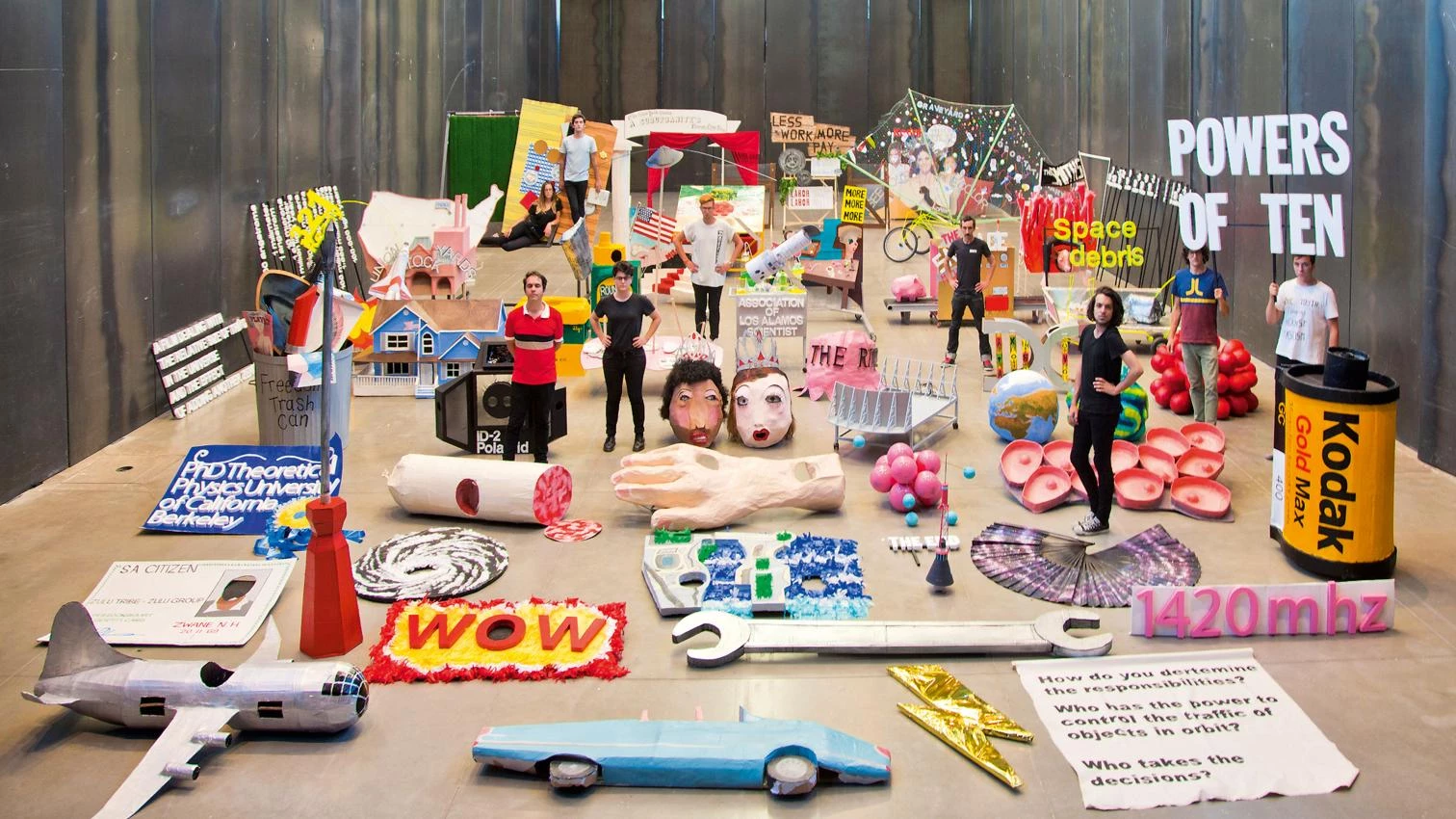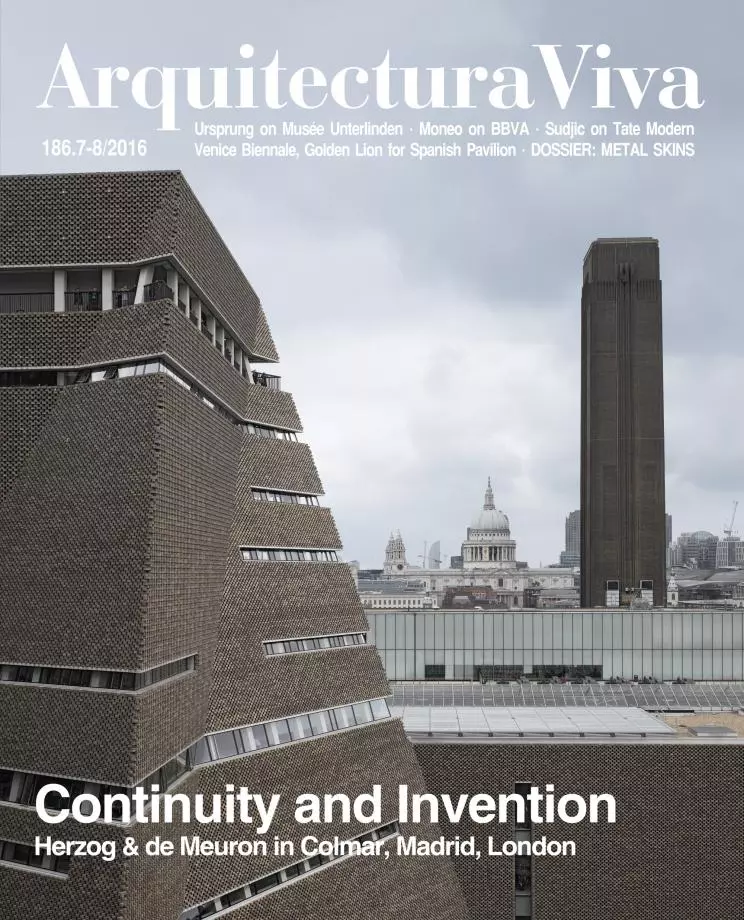
Recently awarded the Frederick Kiesler Prize for Architecture and the Arts, Andrés Jaque presented Superpower of Ten at the Jumex Museum in Mexico City. This is a work in process – accompanied by lectures, workshops, and performances – that reinterprets Powers of Ten, the film that Charles and Ray Eames produced for IBM, in 1977, in the manner of a visual essay of sorts that in nine minutes shows the enormity of the world and its systems through concatenated zooms. Jaque prolongs those nine minutes to highlight the complexity of our ways of life and throw light on conflictive themes that were left out of the camera frame of the Eameses. Superpowers of Ten is complemented by a conversation where Jaque and Beatriz Colomina explore some of the keys to both works, that of the Eameses and the ‘metaEames,’ and here is an extract.
Andrés Jaque: Your work proves that, as is the case with TV shows, the momentous aspects of the Eameses’ work can only be detected in their effects on distant followers...
Beatriz Colomina: I love the reference to TV, which is, of course, the medium most closely contemporary with their work. But I think the question is revealing not just of the Eameses but of your work too – as you were, and are, one of those distant audiences, not just in space but in time. Even though it was critical of the Eameses – or maybe precisely because it was – I learned more about the Eameses from it than from Powers of Ten itself. If design is communication, as we were saying, it is never about sending and receiving a message from afar, but about changing the message, tweaking or twisting it, redesigning the object – interaction.
AJ: In Powers of Ten I find intriguing the sentence with which Philip Morrison comments on the zooming image of the darkness of the universe: “The emptiness is normal; the richness of our own neighborhoods is the exception.” In this sentence, there is clearly a sense of an ‘us,’ a sense of a society that is defined in its opposition to others; but there is also a sense of fear for what is not ‘rich’ outside of this ‘us,’ which suddenly seems to place the movie in a larger threatening context. I wonder if Powers of Ten is also part of this ‘shockabsorber’ role...
BC: Powers of Ten is definitely a shock absorber. Some of the images of the universe in Powers of Ten were based on images from NASA. The space program, for that generation, must have been not just fascinating, but terrifyng as well. The thought, in fact the reality, of an eye in the sky produced a whole new sense of space and a new form of surveillance. The release of the first image of the Earth from space in 1972, The Blue Marble, showed the planet isolated and fragile, in need of tender care, like our houses, our interiors. And in fact, the space program had turned the Earth into an interior. In this sense, Powers of Ten is often brought up in discussions of Google Earth, and in many ways it was a precursor in our desire to understand the universe in a single sliding set of scales. Scale is the new geography. Google Earth also offers a frame, a window that enables everybody to become an astronaut...
AJ: In Powers of Ten the profusion of images, together with their framing, seems to intentionally fail to account for the political tensions of the time. Don’t you think that the great interest of the Eameses in maximizing the capacity of architecture to provide choice was also concealing a significant effort to eliminate choice, or at least to eliminate conflict and politics?
BC: Yes, a huge part of the Eameses’ project, maybe even their main project, is a kind of smoothing over of differences, conflicts, and antagonisms. There is a kind of ‘family man’ philosophy where we are supposed to appreciate the beauty and creativity of humanity without really investigating what is going on. It was not by chance that Edward Steichen’s ‘The Family of Man,’ the 1955 photo exhibition at MoMA, concluded with the image of a nuclear explosion. It is as if the threat of nuclear annihilation for all humankind was used to license a refusal to engage with political struggle. In the face of mutual obliteration, “we are all the same” and “we are beautiful.” The phrase “elimination of choice under stress” is such a loaded phrase; it is itself a weapon.
If the Eameses veiled conflict, you seem to celebrate it. In Superpowers of Ten you describe your being a fan of their work as “inhabiting its conflicts.” This is a very architectural idea. I am very interested in your expresion because it treats being a fan as a kind of occupation of space. Being a fan becomes a critical political act. This is what you have brought to the field. The very idea of being a critical fan undoes a normal understanding of criticism.
AJ: Yes, the expanding and transmedia architectures of the Eameses are early cases of the kind of habitat we now live in. The effects of architecture are not produced by buildings alone, but by the collaboration between buildings, objects of different scales, images of fictional life, genes design, drugs, fashion... We no longer inhabit cities, but rather transmedia enactments. But what is that we can call inhabitance and politics now? Completing the one-day construction of their house’s frame by assembling it themselves through photography was a way for the Eameses to inhabit the house. As often happens on Instagram, inhabiting something implies your own inclusion in the frame.
BC: All the photographs of Superpowers of Ten are taken from a particular frame, as if from a surveillance camera in the corner of the room, with everyone looking up, aware of being watched from above and beyond. What were you trying to communicate?
AJ: We wanted to show that the use of the term ‘powers’ is not only about math, but also about the capacity to act and to force action. Picturing, profiling, watching, witnessing, detecting, assesing, and surveying are ways of designing, of transforming. With these photographs we were trying to expand the definition of ‘power’ to include a number of problematic realities that were out of the Eameses’ frames. Power is here more like the superhero’s powers, which is why we called it Superpowers of Ten.
I was determined to include in Superpowers of Ten the reenactment that the elder transgender activist Flawless Sabrina did of the 1968 Miss America ceremony. She created an interior which was as corny and beautiful as the one of the original ceremony. Her contestation of Miss America’s gender normativity was done by means of interiors and fashion, the same kind of architectural medium that the Eameses mobilized. With Superpowers of Ten I wanted to account for the way politics have traveled in the last few decades to unexpected architectural compositions. Architecture can only gain political relevance if it occupies the technologies where social and subjective distinctions are being disputed.





